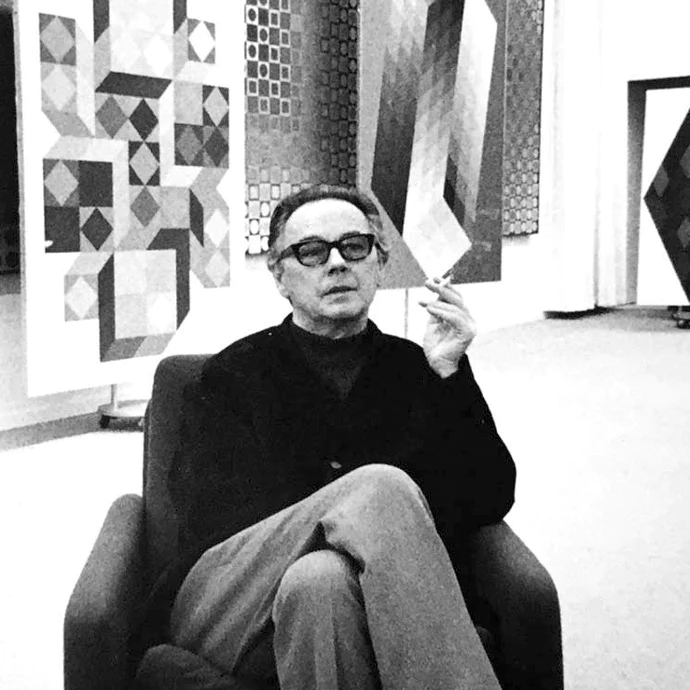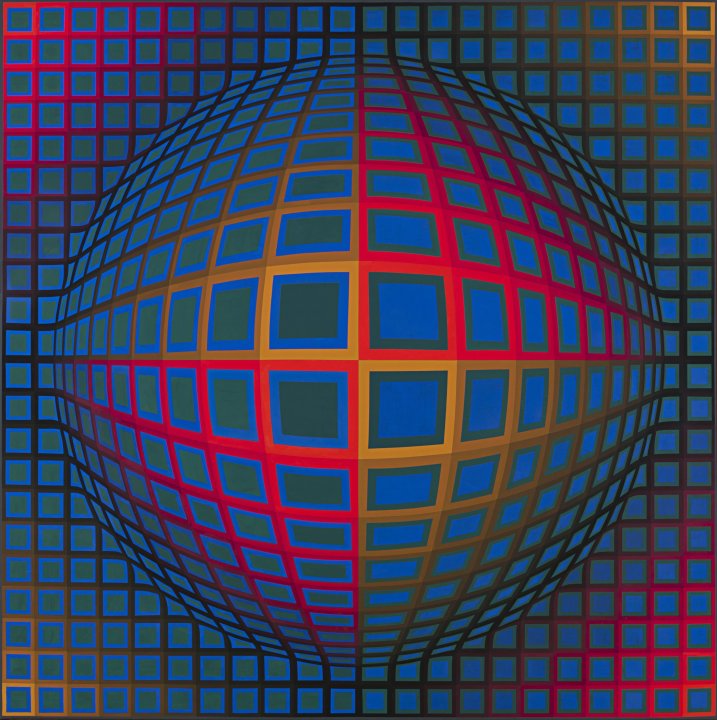We set out on an immersive experience of the creative realm where Victor Vasarely loved the world of forms and colors and gradually changed them into works of mesmerizing art. Certainly, among his famous works, Vega-Nor as a remarkable picture calls the audience to discover by themselves the marvels of the visual tricks. In this far-reaching investigation, we shall uncover the life of Victor Vasarely, his artistic career, and the profound complexities of Vega-Nor.
Who was Victor Vasarely

Victor Wassily Lazareovich Vasarely, born in Hungary in 1906, was a visionary artist who contributed significantly to the art world. Before gaining worldwide fame for his seminal works, Vasarely had previously been involved in various fields including advertising and graphic design. The early experiences greatly affected his participation in artistic affairs in the future for him was an invitation to try different styles and techniques.
FUN FACT: Victor Vasarely’s artistic experimentation extended beyond traditional canvases. In addition to his renowned paintings and prints, he explored the integration of art into architecture and public spaces.
His Career
Vasarely’s art was in various forms and constantly changing. The 1930s saw him come up with abstract geometric patterns that would, later on, be his stepping stones towards the discovery of his breakthroughs. A pivotal point in García’s career was the 1950s and 1960s when he became an international artist for his Op Art work. Op Art (short for Optical Art) – such a style that triggers the vision and gives an impression of an optical sensation of movement and depth.
Vasarely has been always focused on creating opportunities for the masses to consume art. He frequently made prints and multiples to allow him to reach out to people from various social classes who could also enjoy and participate in forming the final work. This inclination to make art available to all had a profound effect on the art movement of the time, which saw such ideas of democracy being instituted in many of the subsequent generations of artists.
What is Happening in Vega-Nor?

| Artist | Victor Vasarely |
| Date Created | 1969 |
| Medium | Acrylic |
| Genre | Op Art |
| Period | Contemporary |
| Dimensions | 200 x 200 cm |
| Series/Versions | N/A |
| Where is it housed? | Buffalo AKG Art Museum |
Vega-Nor, crafted by Vasarely in 1969, showcases his illusion expertise. It combines geometric figures and vibrant colors. These elements create a visual dance, inviting viewers into a captivating space.
The allure of Vega-Nor lies in its ability to create animated visual effects. It seems to alter and vibrate as viewers shift positions. Patterns in Vega-Nor result from careful calculations. Vasarely’s precise management breathes life into the artwork.
Vega-Nor is not a static object, it is an artwork that interacts with its audience. The optical properties can change under various circumstances like lighting conditions and view angles which creates a different and charming experience for every person that sees Vega-Nor.
Interesting Facts about Vega-Nor
Celestial Inspiration: The name Vega-Nor is derived from the star Vega. Vasarely’s fascination with cosmic themes is evident in the artwork, symbolizing universal order and wonder.
Meticulous Precision: Despite its seemingly complex appearance, the patterns in Vega-Nor are based on simple geometric shapes like squares and circles. Vasarely’s meticulous attention to detail is evident in every carefully calculated element.
Ever-Changing Dynamics: Vega-Nor is not a static image. Its optical illusions create a dynamic visual experience that can make it appear as if the shapes are in constant motion. This dynamic quality adds an extra layer of excitement to the viewer’s engagement with the artwork.
Mathematical Foundations: The optical effects in Vega-Nor are rooted in mathematical principles. Vasarely’s deep understanding of geometry and proportion is skillfully employed to create a harmonious and visually intriguing composition.
Varied Perspectives: The experience of Vega-Nor varies. Depending on perspective and lighting, it reveals different facets of optical magic.
Artwork Spotlight: Aix-MC
“Aix-MC” is a wonderful example of Victor Vasarely’s supreme knowledge in Op art, marked by moving and vibrating geometrical shapes that make the viewer see the paintings differently. Through its exact combinations of forms and tones, the artwork entices the gaze, meditating and distorting our vision.
Frequently Asked Questions
What was Victor Vasarely’s most famous piece?
Perhaps because Vasarely’s Alphabet Plastique was so representative of its time, it is widely regarded as his most significant contribution to twentieth-century art.
Who is the artist of the painting titled Vega Nor?
Victor Vasarely, known as the “Father of Op Art,” played a major role in the movement. One of his paintings, Vega-Nor, showcases an organized grid that seems to bulge and extend beyond the picture plane.
Conclusion
Vega-Nor by Victor Vasarely epitomizes his pioneering spirit. It breaks traditional boundaries, captivating with shapes and colors. Delving into Vasarely’s life reveals his talent and creativity. Vega-Nor stands as proof of Vasarely’s lasting influence, inspiring future generations.














